Another name for Epsom salt is magnesium sulfate, which is a vital mineral that can substantially improve plant health and productivity. This article focuses on the importance of timing when applying Epsom salt to plants, as its efficiency depends on several factors, including plant species, growth stage, and environmental conditions. Understanding the ideal application times will enable gardeners to use the advantages of Epsom salt to increase nutrient uptake, enhance flowering and generally strengthen their plants. The following sections will discuss how best to practice it; thus readers will be able to know how they can apply or use Epsom Salt effectively in their regular gardening routines.
Understanding the Role of Epsom Salt in Plant Care
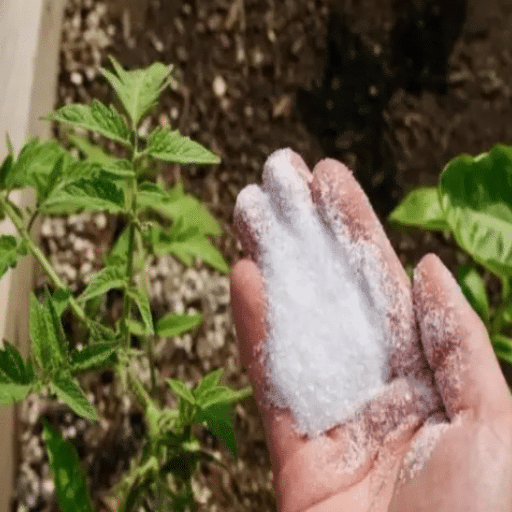
Primarily due to its high magnesium content which is essential for photosynthesis and chlorophyll formation, Epsom salt plays a key role in plant care. Furthermore, magnesium aids in the uptake of other important nutrients, such as nitrogen and phosphorus, thereby improving the overall health of plants. Also, it contributes to robust growth and development through the synthesis of amino acids, proteins, and vitamins by the sulfate component. This is why gardeners must understand what magnesium and sulfates do physiologically so that when applying Epsom salts at the right time, they can increase their resistance to stress and have better fruiting/flowering, hence, healthier plants.
Key Nutrients Provided by Epsom Salt
- Magnesium (Mg²⁺):
- Role: Magnesium is a central atom in a molecule of chlorophyll, thus facilitating photosynthesis and energy production within plants. It activates more than 300 enzyme systems responsible for biochemical reactions, including those involved in protein synthesis and nucleic acid metabolism.
- Recommended Application Rate: A general guideline for most plants is about 1 tablespoon per foot of plant height dissolved in water, which provides approximately 2.5 grams of magnesium per application.
- Sulfate (SO₄²⁻):
- Role: Sulfate is crucial for the synthesis of certain amino acids, like cysteine and methionine, which are necessary for making proteins. It also helps produce some vitamins, while aromatic properties of flowers, especially among herbs, are enhanced.
- Recommended Application Rate: The use is similar to that recommended for magnesium where one tablespoonful should be enough per each foot tall plant yielding around 3 grams of sulphates.
Common Misconceptions About Epsom Salt in Gardening
- Epsom Salt Is a Miracle Cure: One common myth propagated about Epsom salt is that it cures all plant diseases. Although it may provide magnesium and sulphates, it is not the complete solution for fertilizers. Plants require various nutrients like nitrogen, phosphorous and potassium in a balanced diet. Overdependence on Epsom salts can lead to nutrient imbalances and inadequacies.
- Overuse Is Harmless: Many farmers falsely believe that applying more Epsom salt means growing faster. In fact, excess application can cause salinity build-up in the soil, which will adversely affect plant growth and root healthiness. The recommended rates should, therefore, be observed to avoid any potential toxicity.
- Effectiveness for All Plants: Some think all plants benefit equally from Epsom salts. Although some plants, such as tomatoes and peppers, may require extra magnesium, others grow normally without additional magnesium or any other special management processes to eliminate nutritional deficiencies (standard nutrition management). This calls for understanding different plants’ specific requirements for successful gardening practices.
Optimal Seasons for Epsom Salt Application
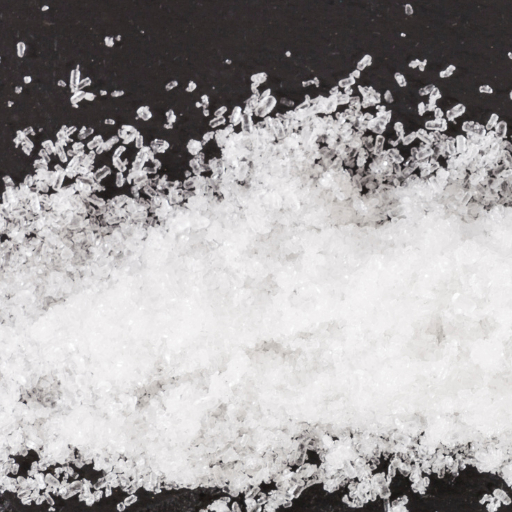
The right time for using Epsom salt in gardening relates to the growth phases of plants. It is typically applied early in the spring when plants start to grow again, this is because it increases nutrient uptake and helps them actively develop. The next application can be beneficial during mid-summer, especially for heavy feeders like tomatoes and peppers, since it might assist in replenishing magnesium levels lost during the peak growth period. Since plants are dormant at that time and salts may not get utilized before winter, it is important to avoid applying these fertilizers late in fall or winter. Understanding specific plant growth cycles ensures a timely and beneficial use of Epsom salt.
Early Stage: Spring Growth Enhancer
Epsom salt applications help improve the growth of young plants by providing critical magnesium and sulphur during springtime. These elements are essential for photosynthesis as well as general plant health. Incorporation of Epsom salt into soil can enhance seed germination during the spring season, hence strengthening cell walls while supporting leaf development. My most horticulturists recommend mixing Epsom salt with water so that it can be absorbed easily through the root system. The first application made on these gardens helps meet the immediate requirements of plants while preparing them for the next growing season, thus ensuring vigorous nutrient intake and greater resistance to environmental stresses.
Summer: Increasing Flowering and Fruit Production
Among other benefits, applying Epsom salt becomes more advantageous as summer approaches especially on flowers such as tomatoes, peppers, cucumbers etc., belonging to Solanaceae family at flowering fruiting stages.The presence of large amounts of magnesium within Epsom salts stimulates the synthesis of chlorophyll, an important component required for photosynthesis, which in turn results in higher energy production within the plant (Al-Sultan & Shahbaz 2012). Hence, improved flowering is followed by increased fruit yield (King, 2012). Sulfur helps in the making of amino acids and proteins that are needed for fruit development. For best results, Epsom salt should be mixed with water and used after every four to six weeks to provide plants with vital nutrients during such crucial stages of growth. This practice not only boosts the quantity of fruits produced but also enhances their quality, leading to healthier, more hardy plants.
Preparing Plants for Winter Dormancy: Fall
In terms of preparation for winter dormancy which is a significant stage in their survival through a cold season, it becomes necessary to use Epsom salt in fall when it can support building up stronger cellular structures by providing enough amounts of magnesium and sulfur as well as enhancing nutrient absorption (Al-Sultan & Shahbaz 2012). One should apply this compound during late summer to early fall by combining it with water and then sprinkling it over soil so that useful substances would be absorbed by plant roots, preparing themselves for winter stress. Application will result in stronger root system development, which can help plants endure frosty periods or dry spells, respectively. These applications also help the plant prepare for dormancy by setting the foundation for rapid regrowth when spring returns.
Identifying the Right Time of Day for Application
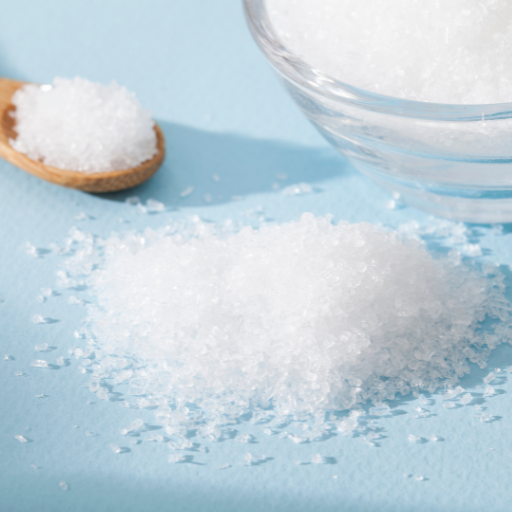
It is important to determine the best time of day for applying Epsom salt to plants in order to ensure maximum nutrient absorption and minimize potential damage. The most favorable time for application is early morning or late afternoon. During these times, the temperature tends to be low, which reduces the possibility of leaf burn because direct sunlight increases rates of evaporation, thus reducing how effective the applied nutrients are. Besides, during such periods, nutrients in question would have better chances of being absorbed by the plants before heat and evaporation resulting from it begin having an impact on their growth. It is advisable not to apply during the peak sun hours between 10 AM and 4 PM so as to achieve optimal results and maintain plant health.
Morning vs Evening – Which One?
Morning applications are usually preferred since they come with various technical advantages. In the late morning hours for example, temperatures tend to be cooler than in other parts of the day, leading to reduced solution evaporation rates and more efficient uptake by plants. Applying Epsom salt at dawn specifically means that soil can retain water for a long time, thereby maximizing the presence of magnesium and sulfur that are required by roots at this period when they are more actively involved in uptake processes. This is particularly important because root activity has been shown through research to be higher under cooler conditions which could be between 55°F and 70°C at dawn.
On the other hand, evening applications may also provide relief especially if one lives in a very hot climate where burning occurs when Epsom salts are applied directly into sunlight. Nonetheless, there are some problems associated with this approach, too. For example, applying Epsom salts during nightfall might lead to excessive retention of moisture overnight if leaves remain wet throughout, making them become conducive environments that favor fungal disease development on plants’ foliage surfaces that are wet during such circumstances. Nutrient solution relative humidity should be around 50-70% allowing adequate drying time for plant leaves before sunset.
However, although morning and evening applications of the Epsom salts are both beneficial, gardening experts and agronomists hold that early mornings are best to promote nutrient uptake and overall plant wellness, taking into account how temperature and humidity affect the absorption of vitamins such as K and Ca.
The impact of weather conditions on timing of application
Weather conditions play a critical role in determining when nutrients like Epsom salt should be administered as their efficacy and safety may be significantly affected by different environmental parameters.
Firstly, high temperatures ranging between 60 to 75°F allow for optimal application. These temperatures boost metabolic activities making it easier for plants to take up nutrients. In contrast, very high temperatures, particularly above 85°F, can impose stress on plants, thereby affecting nutrient application negatively.
Secondly, leaf wetness as well as evaporation rates depend on the level of humidity in the surroundings. A relative humidity range between 50% and 70% is ideal for an application process. This degree of moisture retention allows the necessary uptake of nutrients without creating an environment conducive to fungi multiplication which happens when more than 70% humidity exists.
Lastly, rainfall and forecasts are also very important things to keep in mind. If applied just before predicted rain falls, this will help leach valuable minerals deep into the root zone. Alternatively, precipitation will dilute the nutrient effect, making a change in time necessary if it is going to happen soon.
Considering these weather factors—temperature (60–75° F), humidity (50-70%), precipitation predictions—helps ensure optimum timing of Epsom salt application for improved nutrient use efficiency while minimizing risks associated with plant health improvement.
How Plant Health is Affected by Frequency of Application
The frequency with which Epsom salt is applied determines the state of health for plants, including the level of nutrients accessibility and stress management. Soil tests are recommended to establish initial levels of magnesium and sulfates, as this will determine adjustments in the application frequency. Generally, most plants can apply a reduced Epsom salt solution every four to six weeks during the growing season. Over-use may result in excess salts building up in soils leading to ion toxicity and affecting essential nutrient balance. Besides, incorrect timings can prevent plants from effectively uptaking nutrients causing stunted growth or chlorosis. Therefore, regular checks and adherence to specified frequencies are important in achieving optimal plant health and good development.
Signs Your Plants Need Epsom Salt
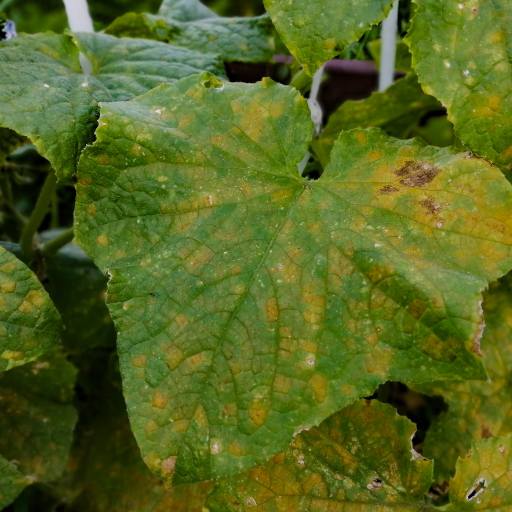
Deficiency of magnesium in the soil is one reason why plants may need Epsom salt. The common symptoms include interveinal chlorosis, a condition where there is yellowing between the veins of leaves which often advances to leaf curl or tip burn. Another symptom includes stunted growth whereby plants don’t attain expected heights or have less number of flowers and fruits than normal. Magnesium deficiency can also manifest itself through poor fruit development and inability to withstand dry conditions. In case these signs are noticed, carrying out a soil test should take place so as to ascertain nutrient levels and prescribe the right application of Epsom salt for restoring plant health and vigor.
Visual Cues of Magnesium Deficiency
The visual cues on plants that may be used to diagnose magnesium deficiencies are sometimes called ‘chlorosis’ in some studies, because it occurs first as pale veins with a green leaf blade. Subsequent leaf damage could involve edge curling or brown tips forming on those margins; thereby causing further degeneration. Apart from this, growth retardation might affect whole plants leading to fewer flowers and fruits than would occur in healthy ones. Loss of more leaves especially the older ones indicates that additional magnesium will be withdrawn from these tissues if not enough remains in the plant tissues currently available for redistribution elsewhere within the plant. These symptoms, therefore, suggest that a close examination of soil nutrient levels should be conducted in order to verify whether there exists magnesium deficiency while appropriate measures like the use of Epsom salts are considered.
Slow Growth and Poor Flowering: Could Epsom Salt Help?
Slowing growth rate as well as weak flowering caused by lack of magnesium can both be mitigated by using Epsom salt since it has contents like magnesium sulfate which is important for this matter.. Available literature shows that magnesia is essential in chlorophyll –the main component for photosynthesis-, thus affecting plant growth including flowering directly. Therefore, when applied onto the soil or as a foliar spray, Epsom salt enhances the availability of magnesium to plants thereby improving absorption of this nutrient. Moreover, it can also facilitate the uptake of other necessary elements, such as nitrogen and phosphorous, thus promoting general plant health. Gardeners facing these challenges may find regular usage of Epsom salt quite useful in having stronger and more vibrant plants with improved flowering.
Leaf Discoloration: What It Tells You
Any change in leaf color may have a meaning to it. Yellowing leaves might indicate a scarcity of nutrients (nitrogen or magnesium especially), while browner margins show a lack of enough water or even excessive nutrient salts. Furthermore, mottled appearances could be signs of pest infestations or fungal infections. In order to identify this problem and prescribe appropriate treatments one has to take into account which parts are discolored and what their color is together with the general condition of the entire plant. It is important that gardeners check on their leaves regularly so that they can spot any underlying problems as early as possible for vibrant growth and healthy-looking gardens.
Specific Plant Types and Epsom Salt Use
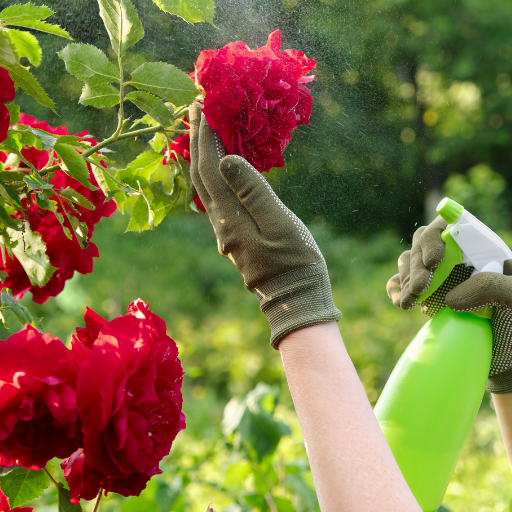
- Tomatoes: The application of Epsom salt can significantly boost tomato production since blossom-end rot is prevented, and overall fruit quality is improved. If Epsom salt is applied around the base of tomato plants during the growing season, they can have excellent growth and abundant fruits.
- Peppers: Peppers, like tomatoes, do well with magnesium, which is why they benefit from using Epsom salt. This mineral increases fruit development for these crops and ensures healthy foliage, resulting in great yields.
- Roses: The use epsom salt among rose gardeners has been seen to result into lush growth and increase flowers. This implies that roses are made stronger and more beautiful when they get regular applications, leading to greener leaves and a higher number of blooms.
Vegetable Gardens: Timing for Optimal Harvests
Timing is critical in vegetable gardening so as to maximize harvests. Each vegetable generally has a specific growing season which includes an advised sowing date as well as harvest window. For instance, beginning early spring towards late summer is ideal for cool-season crops such as peas or lettuce where two harvests can be achieved within a single year period; conversely, warm-season vegetables like tomatoes or peppers should be planted after the last frost event (often late spring) so they can establish themselves well enough throughout the summer resulting in bountiful yields.Regular crop monitoring and the ability to know when to pick will further improve the timing of your harvests, leading to tastier flavors and better-quality vegetables.
Flowering Plants: Enhancing Bloom Quality and Quantity
- Fertilization: Applying balanced flower plant fertilizers regularly will provide vital nutrients for vigor growth and vibrant bloom display. Fertilizers rich in phosphorus promote flower development; thus, this element must be considered when choosing a fertilizer.
- Watering Practices: Watering practices must always remain consistent and appropriate. Flowering plants thrive better in soils that are evenly moist. Therefore, it’s good to ensure they have enough water without making them too wet. Some may need mulch, as this can help keep soil temperature in check.
- Pruning and Deadheading: Pruning is a creative process of encouraging new growth, and more flowers by cutting off spent blooms that allow air to circulate freely. As a result of removing the faded blossoms, deadheading encourages further flowering, hence increasing the blooming period for longer times while keeping plants neat.
Houseplants: Maintaining Health and Vitality
- Light Requirements: Sunlight requirements differ among houseplants, which is why it is important to put each type of plant where it needs to be (direct sunlight, indirect light, or low-light conditions). Also, rotate your indoor plants evenly regularly.
- Watering Techniques: The hydration requirements of your potted plants must be fully understood because some do well with dry soil between waterings, while others prefer constant moisture content. Always look at the top inch before watering so you won’t end up adding excess water.
- Humidity and Temperature: Many houseplants, especially tropical ones, love high humidity levels. Thus, they can be kept at such levels by using humidifiers, grouping them together, or putting a tray containing water and pebbles under their pot. They should also be kept away from drafts and sudden temperature changes that promote sound healthiness.
Best Practices for Applying Epsom Salt
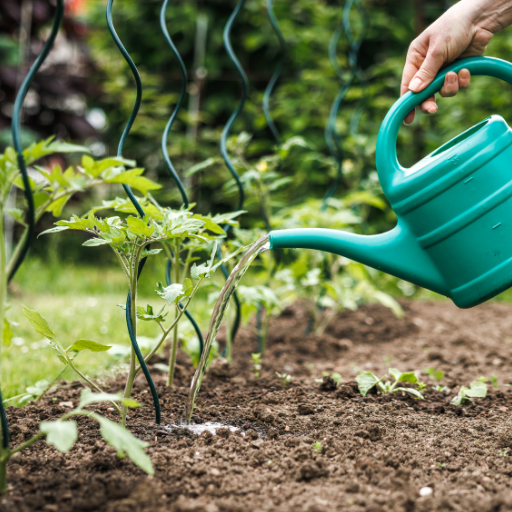
To achieve the best results, there are a few things that you should do when applying Epsom salt to your plants. Dissolve 1-2 tablespoons of Epsom salt in a gallon of water for a fertilizing solution suitable for all plants grown in soil. This mixture can be applied every month during the growing season to soils around plants. For flowering plants, this can help them produce more flowers and can also improve their general health status. However, it is advisable not to over apply as too much magnesium could create nutrient imbalance in the plant. It is necessary to ensure that Epsom salt use aligns well with an overall fertilization plan to satisfy all nutritional requirements.
Choosing The Right Application Method: Soil vs Foliar
Soil application or foliar application methods for Epsom salt may seem to be confusing, but their choice requires considering specific requirements of different crops and peculiarities of each method.
Soil Application involves simply putting some Epsom salts directly into the soil or using it as dilute solution during watering. By such method, magnesium and sulfur get absorbed by roots with time, which is a good option for plants thriving on constant access to nutrients. Generally recommended proportions suggest dissolving between one and two tablespoons of Epsom salts in a gallon of water and applying this solution once every month through the entire growing season period. Such an approach promotes healthy growth overall and works especially well on the long-term supply of nutrients into plant tissues.
Foliar Application on the other hand refers to spraying diluted Epsom salt solution on leaves directly. Here, this way gives faster nutrient uptake because magnesium gets absorbed by leaves quickly than if used through other means like soil application which takes longer times before nutrients can be absorbed by root system (Bergmann et al., 2013). Commonly, a protocol is dissolving one tablespoon of Epsom salt in about a gallon of water and applying it as foliar spray every two weeks, especially in the early morning or late evening, to avoid leaf burn. It is used for correcting yellow leaves and poor growth due to lack of magnesium.
Generally, the choice of either soil or foliar application methods depends on the particular plant nutrient requirements, existing ground conditions and the level at which symptoms such as deficiency occur on a given crop. The balance between these methods contributes positively towards ensuring plants are well nourished throughout their life cycle.
Measuring and Mixing: Ensuring Correct Dosage
There are specific guidelines that are based on the mode of application as well as the type of plants one is treating with Epsom salt to enable an accurate measurement and mixing for plant applications. In the case of soil application, typically, one tablespoonful is used per gallon (8lbs) of water recommended for optimal absorption balance, excluding over-fertilization risks associated with some other types of salts. When measuring, a kitchen scale may be useful if high accuracy is required especially when scaling quantities down for larger gardens or different planting needs.
Contrarily, concerning foliar use, a widely accepted practice among garden experts is applying a gallon of water mixed with one tablespoon of Epsom salt. By doing that, the magnesium is made easily accessible to the leaves while averting harm from too much concentration. The best time to do this spraying is early morning or late evening because it lowers evaporation and leaf burning chances. This does not mean one should use a spray bottle calibrated in ounces to be accurate on how little you can apply. Thus following an application, regular checks on plant condition will help establish whether any adjustments are required as well as ensure that correct concentrations and approaches are being used.
Avoiding Overuse: How Much is Too Much?
- General Usage Guidelines: Most sources recommend not exceeding 1 tablespoon per gallon of water for both soil and foliar applications. Exceeding this limit may lead to excessive magnesium saturation in the soil and imbalance with other essential elements like calcium and potassium.
- Frequency of Application: Specialists have suggested that Epsom salts be applied at most two or three times annually for many plants so that there is no build-up of excess earth-born magnesium in their soils. This keeps their nutrients balanced enough for other minerals to also be effectively taken up by them.
- Monitoring Plant Response: Observe the overall health of plants frequently to detect signs such as yellowing leaves and stunted growth that indicate nutrient imbalances in time; when symptoms occur, think about reducing Epsom salt usage and taking a soil test before adjusting existing nutrient levels safely and accurately.
Reference sources
- HGTV
- Source: HGTV
- Summary: This source provides detailed guidelines on how to apply Epsom salts to various types of plants, including houseplants and shrubs. It offers specific measurements and frequencies for application to ensure optimal plant health.
- Gardening Know How
- Source: Gardening Know How
- Summary: This article explains the benefits of using Epsom salt as a foliar spray. It discusses how to dilute Epsom salt with water and apply it effectively to enhance plant growth and health.
- The Spruce
- Source: The Spruce
- Summary: The Spruce outlines the proper usage of Epsom salt for promoting strong and healthy plant growth. It includes practical tips for application and highlights scenarios where Epsom salt can be beneficial for plants.
Frequently Asked Questions (FAQs)
Q: Why should I use Epsom salt in the garden?
A: Epsom salt, or magnesium sulfate, provides essential nutrients like magnesium and sulfur to plants. These nutrients help with seed germination, chlorophyll production, and overall plant health.
Q: How do I apply Epsom salt to plants?
A: You can apply Epsom salt to plants by dissolving it in water and spraying it on leaves, sprinkling it directly on the soil, or mixing it into the soil. For potted plants, mix one tablespoon of Epsom salt per gallon of water and use it to water your plants.
Q: How much Epsom salt should I use for tomatoes?
A: For tomato plants, it is recommended to use 1 tablespoon of Epsom salt per foot of plant height. You can mix it in the soil at planting time or dissolve it in water and apply it every two weeks.
Q: Can Epsom salt prevent blossom end rot on tomatoes?
A: Yes, Epsom salt can help prevent blossom end rot in tomatoes. Blossom end rot is often caused by a calcium deficiency, but the presence of magnesium from Epsom salt can facilitate better nutrient absorption overall.
Q: Is Epsom salt good for pepper plants?
A: Yes, Epsom salt is beneficial for pepper plants. It provides magnesium, which pepper plants need for strong cell walls and fruit production.
Q: How often should I use Epsom salt on plants?
A: Generally, you can apply Epsom salt every two to four weeks. However, plants don’t like too much Epsom salt, so monitor your plants for signs of over-fertilization.
Q: Can I use Epsom salt with other fertilizers?
A: Yes, Epsom salt can be used alongside other fertilizers. It provides magnesium and sulfur, which can complement the nutrients found in standard fertilizers.
Q: How do I know if my garden plants need Epsom salt?
A: Plants showing signs of magnesium deficiency, such as yellowing leaves with green veins, could benefit from Epsom salt. Soil testing can also help you determine nutrient deficiencies.
Q: What is the best time to apply Epsom salt to my vegetable garden?
A: The best time to apply Epsom salt to a vegetable garden is during the planting stage or as soon as you notice signs of nutrient deficiency. Regular applications every few weeks during the growing season can also be beneficial.






